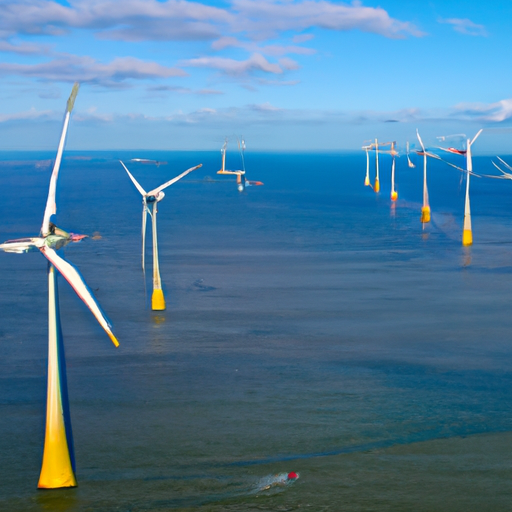The Asia-Pacific region is generating significant buzz with its rapidly expanding market for offshore wind (OSW) power. At the recent APAC Offshore Wind & Green Hydrogen Summit organized by the Global Wind Energy Council (GWEC), agency officials, industry leaders, and subject matter experts converged to explore the untapped potential for OSW in this region.
Accelerating Australia’s Offshore Wind Vision
Among the countries in the region, Australia stands as a compelling contender for leveraging OSW, banked on its extensive offshore wind resources. The government has set bold goals for its growth in the sector, targeting 2 gigawatts (GW) OSW capacity by 2030 and 20 GW by 2050.
Australian Offshore Wind Projects on the Horizon
The GWEC summit acted as a focal point for stakeholders to discuss OSW development opportunities and challenges in Australia. For the two projects planned in Bass Straight and Perth/Bunbury regions, zone consultations are expected to launch this year in October and November, as stated by Australia’s Minister for Climate Change and Energy, Chris Bowen MP.
Tackling Challenges in Offshore Wind Implementation
Overcoming Price Point Resistance
Despite the promising future, the high costs of OSW technology present a hurdle. Offshore wind turbines are typically more expensive than their onshore counterparts and the price of transmission may further inflate the total cost. Nevertheless, with the maturing technology, the overall cost is anticipated to decline.
Planning for Marine Spatial Prosperity
Another key challenge is the need for effective marine spatial planning to ensure offshore wind projects do not interfere with marine activities such as fishing and shipping. As a proactive approach, the Australian government is currently developing its very own marine spatial plan for OSW development.
Asia-Pacific Joins the Offshore Wind Movement
China, the world’s leading OSW market, plans to install a whopping 100 GW of offshore wind capacity by 2030. Other countries like South Korea and Taiwan are rapidly developing offshore wind projects as well.
However, Southeast Asian countries, including Indonesia, the Philippines, Myanmar, Sri Lanka, Thailand, and Vietnam, are emerging as major growth markets for both onshore and offshore wind energy.
Homing in on India’s Wind Energy Development
India, in particular, is projected to develop up to 100GW wind energy in the coming decade for its domestic requirements. Additionally, the country also plays a pivotal role in the global wind energy supply chain.
Fueled by regional electricity demand, rich offshore wind resources, and the mounting cost of fossil fuels, the Asia-Pacific region is on track to become a dominant player in the global offshore wind market, once the technology matures and costs decrease.
Addressing Roadblocks to Offshore Wind Adoption
However, developing offshore wind capabilities comes with its own set of challenges including the need for infrastructure development, finance availability, and government policy alignments. Notably, offshore wind projects require substantial port and transmission line infrastructure, which is currently lacking in these regions. Besides, the high technology costs can deter investors, despite available funding from major financial institutions like the World Bank and the Asian Development Bank.
Policy Adaptations Play a Crucial Role
The variance in government policies across these countries impacts the development of wind projects and the distribution and cost of generated energy. For instance, the liberalized model of the Philippines allows for diverse power production, while Vietnam, with its centralized power production and distribution, can accelerate its necessary energy mix.
APAC Summit: A Bellwether for Collaboration
The APAC Summit concluded successfully and is seen as a progressive step towards encouraging collaboration in this industry. The insightful contribution made by Minister Bowen reaffirms Australia’s commitment to declaring six offshore wind areas in the upcoming year. Further, the Summit’s Offshore Wind Open Day offered potential job seekers an excellent platform to explore opportunities in this burgeoning sector.
























